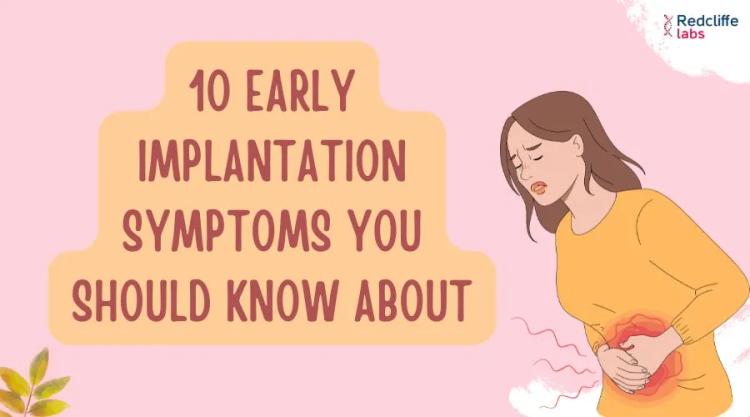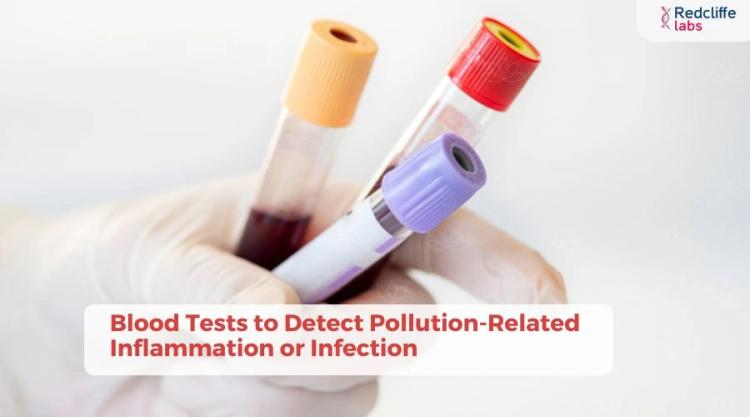How to Identify Blood Clots Symptoms in the Body?

Medically Reviewed By
Dr. Geetanjali Gupta
Written By Muskan Taneja
on Jan 11, 2025
Last Edit Made By Muskan Taneja
on Jul 19, 2025

Did you know that India experiences about 3000 blood clots every year? A blood clot is necessary to prevent excessive blood loss, especially during an injury. However, a moving blood clot may cause severe, life-threatening complications. Identifying blood clot symptoms, especially at an early stage, is important to prevent complications.
The symptoms of blood clots in the body vary depending on their location, such as the leg, lungs, arm, heart, and brain. This guide will provide every necessary insight into blood clot symptoms.
What are Blood Clots?
A blood clot or thrombus is a condition in which a mass of blood forms when proteins, cells, and platelets stick together. A clot helps prevent excessive bleeding and usually dissolves as you heal.
However, if it remains for a long time or travels to different body parts, it can cause medical problems requiring care. Health experts call these clots embolus.
Types of Blood Clots
There are two main types of blood clots: thrombus and embolus.
- Thrombus: These blood clots are stationary, i.e., they don’t move. At the same time, they can block blood flow. Usually, the clots prevent blood flow after an injury.
- Embolus: These blood clots can break loose and travel to other body parts. It can be dangerous for the body and can cause serious health complications.
These are the main types of blood clots. However, depending on blood clot symptoms, health experts may classify it as Deep Vein Thrombosis (DVT) and pulmonary embolism (PE). DVT and PE are not the only two medical problems; while the former occurs in your deep veins, the latter blocks the blood flow to parts of the lung, which can be life-threatening.
Studies found DVT is common in 1.79 per thousand, while PE is 15.9%, and there are 80% of casualties reported from it. A person with an embolus may experience arterial embolism, heart attack, stroke, and thrombophlebitis.
What are the Causes of Blood Clots?
Blood clots promote healing and stop bleeding from damaged blood vessels. They may also form because of an injury or trauma experienced by your body during any medical procedure (or surgery). People may develop blood clots for various reasons, including:
- People who are over the age of 60.
- People who have either inherited blood clotting disorders from their parents or acquired them after birth.
- People involved in smoking or tobacco consumption.
- Pregnant women.
- People who live a sedentary lifestyle prevent clotting factors to control expected bleeding.
- People consume certain medications for hypertension, diabetes, chronic inflammation, high cholesterol, obesity, cancer, and atrial fibrillation.
- People with high estrogen levels engraved either from pregnancy, birth control, or hormone-replacement therapy.
Blood Clot Symptoms
Blood clots dissolve naturally. However, if they don’t dissolve or move to certain areas, they may cause problems. The signs and symptoms of blood clots may vary by location. There is no single common symptom of a blood clot, and you should monitor your body's signs to prevent complex medical conditions.
Blood Clot in Brain Symptoms
Blood clots in the brain can happen when a blood vessel breaches and fills with blood, creating a blockage in your arteries. In response to this, your brain may be deprived of oxygen. This damage in the brain cells may lead to serious health issues.
Some may experience mild symptoms of blood clots, while others may experience serious symptoms. A common symptom of a blood clot in the brain is headache. Nonetheless, there are other symptoms of a blood clot in the head.
- Blurry Eyesight—Blurry eyesight is a noticeable and early symptom of blood clots, as blood clots in the brain may block oxygen, causing blurred vision.
- Recurring Headaches- Sudden headaches, numbness around the face and body, and pressure in the head could indicate a blood clot.
- Slurring in Speech- As your brain is deprived of oxygen, it will result in damage and, therefore, create slurred speech. These impediments in your speech may indicate blood clots in brain symptoms.
- Paralysis- Blood clots in the brain may cause paralysis. However, the symptom depends on the location of a blood clot, which can cause acute paralysis in certain parts of the body.
- Abnormal Electrical Activity—Seizures, dizziness, and uncontrollable motor functions are other common symptoms of blood clots.
Tips To Treat Blood Clots in the Brain
- Anticoagulant medications
- Mechanical thrombectomy (a surgical procedure done to remove blood clots in the brain).
- Surgery for blood clots in the brain
- Stents
- Thrombolytic (drug to instantly dissolve blood clots)
Symptoms of Blood Clot in Leg
Blood clots in the leg are also known as Deep Vein Thrombosis (DVT). Studies have found that up to 30% of people with DVT have either mild or no symptoms of blood clots. Swelling is an early-stage blood clot in the leg symptom. However, you may experience the following symptoms.
- Warm skin around the injured (painful) area.
- Redness or darkened skin around the injured area (maybe hard to see on brown or black skin).
- Swollen veins that are hard to touch.
- Throbbing pain in 1 leg, usually in the thigh or calf area, specifically when walking or standing up.
- Tiredness or heaviness in the leg that doesn’t disappear even after rest.
Tips to Treat Blood Clot in Leg
- Anticoagulant medication
- An inferior vena cava (IVC) filter is a small device placed inside a vein to trap clots.
Blood Clot in Heart Symptoms
A blood clot in the heart may result in a stroke or heart attack. Health experts call this ‘Coronary Arterial Thrombosis,’ as it affects arteries and creates a critical blood flow to your heart, resulting in a heart attack.
There are some blood clots symptoms which include:
- Dizziness
- Sweating
- Nausea or vomiting
- Pain in the neck, back, jaw, or arm
- Shortness of breath
- Severe chest pain
- Lightheadedness
Tips to Prevent Blood Clots in the Heart
- Avoid consuming tobacco products and smoking
- Limit alcohol consumption
- Maintain a healthy weight
- Eat a heart-healthy diet
- Avoid sitting for a long period
- Indulge in some physical activity.
Blood Clot in Lung Symptoms
A blood clot in the lungs is also known as pulmonary embolism (PE). It is common among people, creating a need for a medical emergency. Symptoms of blood clots include:
- Chest pain
- Breathing problems
- Blood from cough
- Sudden shortness of breath or difficulty breathing
- Rapid heart rate or heart palpitations
- Dizziness or fainting
- Pale or clammy skin
- A sharp pain in the chest, especially when you take a deep breath.
Tips to Prevent Blood Clot in Lungs
- Vena cava Filter
- Thrombolytics
- Anticoagulants
- Percutaneous Thrombectomy
- Pulmonary Embolectomy
Symptoms of Blood Clot in Pregnancy
Women are five times more likely to develop a blood clot during pregnancy and three more months after giving birth. A blood clot may break off the oxygen supply to the baby or other important parts of your body. Women with DVT or PE are at high risk of transferring it to their fetus during pregnancy. Blood clot pregnancy symptoms are important to look out for better treatment and diagnosis.
Blood clots symptoms in pregnant women with PE include:
- Chest pain
- Dizziness or fainting
- Fever
- Excessive sweating
- Dry cough with blood
- Sudden shortness of breath
- Redness in the skin because of lack of oxygen
- Unusual pain or swelling in the legs.
Blood clots symptoms in pregnant women with DVT include:
- Pain in the back of the leg, not caused by any injury
- Red or warm skin in the affected area
- Tender or numb legs
- Unusual swelling in the legs, normally below the knee
- Veins that bulge or appear larger than normal
Tips to Treat Blood Clots in Pregnant Women
Treatment for blood clots in pregnant women includes blood-thinning medications such as anticoagulant (heparin), which is usually considered safe during pregnancy. It can help lower the blood clotting ability and prevent an existing blood clot from getting bigger. Although these medications are safe, consult your doctor and take necessary precautions.
Blood Clot in Belly
Blood clots symptom may also appear in your intestines or bowels (belly) because of health conditions such as liver disease, diverticulitis, and even through birth control pills. Health experts also call this superior mesenteric vein (SVM) thrombosis. This condition affects blood flow, leading to organ damage.
Symptoms of Blood Clots in Belly include:
- Diarrhea
- Bloating
- Blood in the stool (poop)
- Severe pain in your belly may get worse after you eat.
- Blood in your vomit
- Nausea or vomiting
Tips to Treat Blood Clots in Belly
- Prevent smoking
- Limit your alcohol intake
- Stay hydrated
- Eat a balanced diet
- Medications
- Anticoagulant
- Thrombolytics
- Surgical Procedure
- Catheter-directed thrombolysis
- Thrombectomy
When To See a Doctor?
Although signs and symptoms of blood clots, such as shortness of breath, chest pain, nausea, and headaches, are common, approximately 50% of the population isn’t aware that they have internal blood clots because of the conditions' frequent asymptomatic nature. Consulting a doctor may help prevent serious health complications if you see signs or persistent signs.



